In an exciting collaboration, a limited edition collection of home ware features charming turn-of-the-century Filipino characters from the mind of artist Dominic Rubio.
Casa Juan expands its fine Filipino home ware line with a limited edition collection of side tables, jewelry boxes, clocks, and serving trays by Filipino contemporary artist, Dominic Rubio. An exploration of the functional art concept, the collection proposes a new way of appreciating and integrating Rubio’s distinctive “people types” wearing turn-of-the-century Philippine traditional garb. Casa Juan Founder, Michelle Asence Fontelera explains “We expanded our collection to include trays, clocks, jewelry boxes and tables. The idea was to promote purposeful Filipino art. This is art that you can actually use. The collection also hones in on the idea of ‘art for all.”
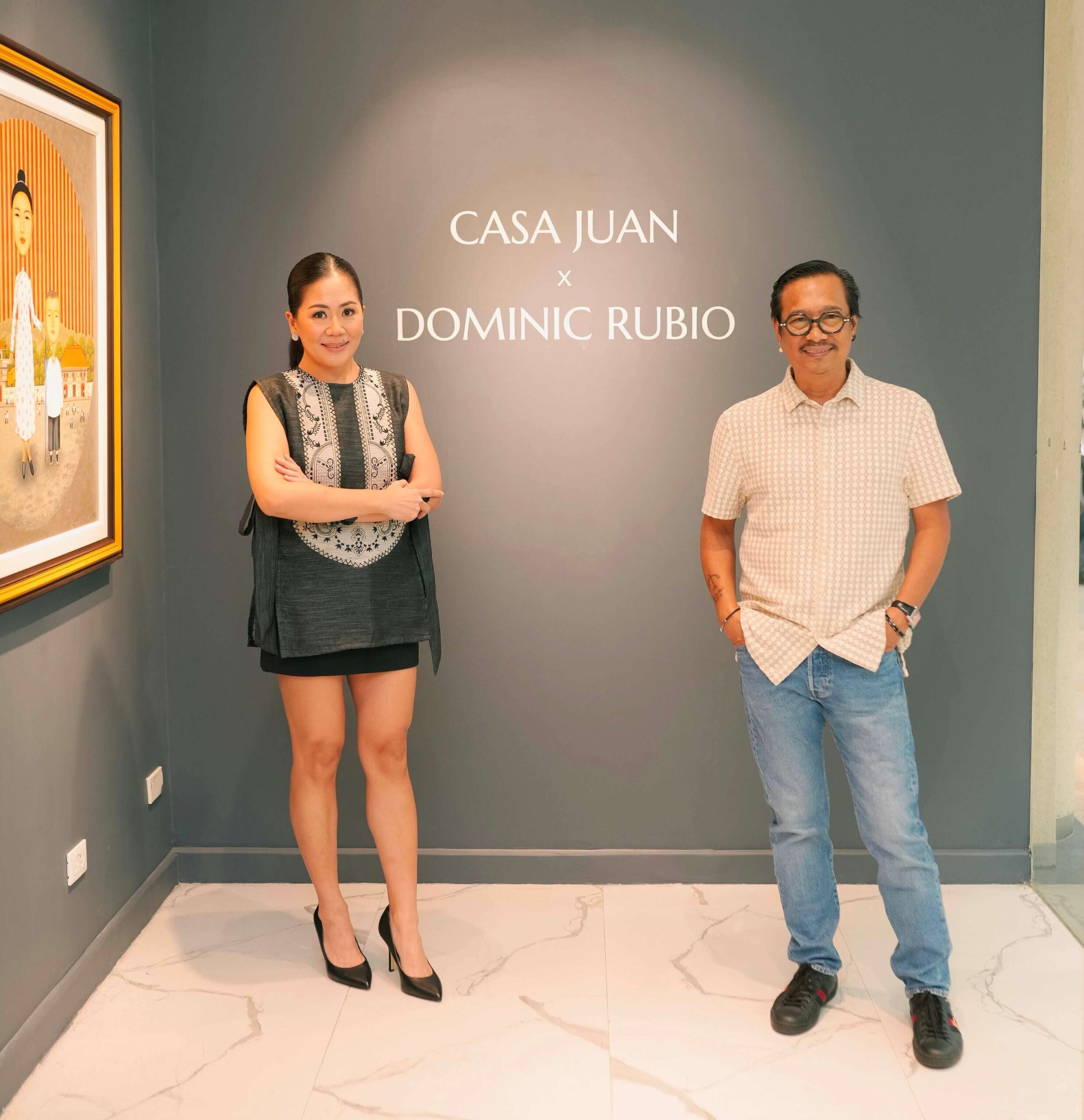
Dominic Rubio was born in Paete, Laguna in 1970. His hometown, known for its wood carvings, was an early indication that heritage and artistry would be an integral part of his life. He honed his techniques as a visual artist at the Santo Tomas College of Fine Arts where he majored in Commercial Arts.
READ ALSO: Artistic Altruism: The Generosity Behind Fundacion Sansó’s Magnanimous Reciprocity
It then seemed like a natural progression that he would pursue a career in the advertising world. Rubio worked as an artist for one of the country’s largest advertising agencies, Puris Lintis of Manila. He later relocated to the more tranquil shores of Pearl Farm in Davao del Sur. There, the artist connected with landscapes, people and way of life in Northern Mindanao. His explorations of the southern region also allowed him to live among the Mandaya and T’boli tribes as well as the Bilaans and Badjaos. Rubio’s early works depicted the quintessential Filipina in her most natural forms and surroundings. In 2023, he held his first major show with Galerie Joaquin where he once again showcased the Filipina and her evolving sensibilities.
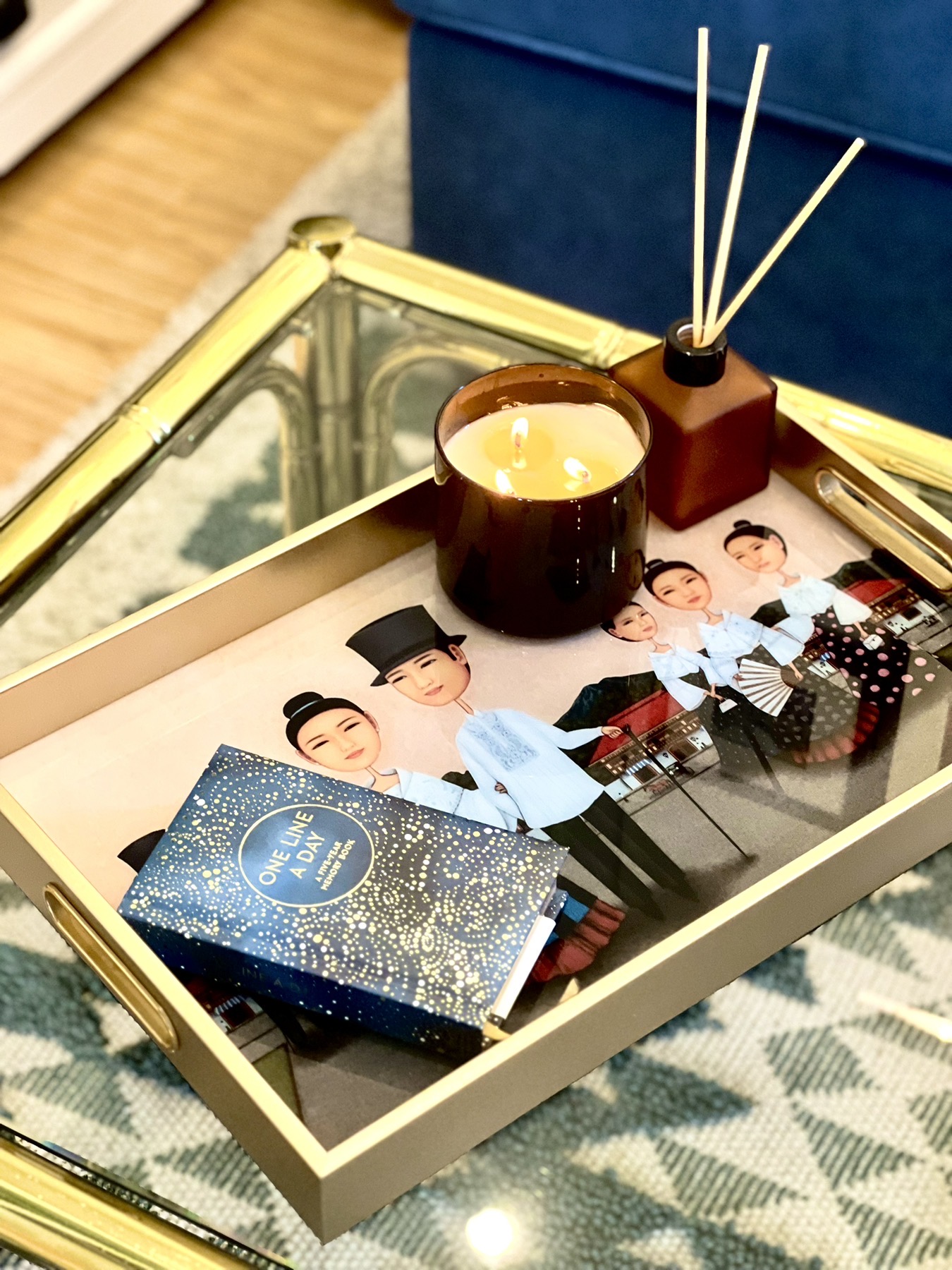

The pairing between Casa Juan and Rubio was bound by a shared desire to make art more accessible. It was also brought to life and set in motion by Galerie Joaquin. This would be Rubio’s first time to lend his artistry to merchandise. He elaborates: “Matagal na ino-oofer sakin na gawin merchandise yung mga painting ko. Special ito sa’kin kasi nashe-share ko yun Filipino way of life sa mga tao na tumatangkilik ng art. Sana wag natin kalimutan and sarili nating kultura, lalo na sa mga artists. Thankful rin ako sa Galerie Joaquin, sila talaga nag asikaso sa pag develop nito. Masaya ako kasi ngayon, hindi lang sa painting or sculpture makikita ang mga gawa ko. Maibabahagi ko na sha sa mga taong mahilig sa art, kolektor man o hindi. At saka functional art siya; pwede talagang gamiit. (I’ve been getting offers to apply my paintings into merchandise for some time. This collection with Casa Juan is special for me because I am able to bring elements of the Filipino way of life to art enthusiasts. My hope is that we remember to celebrate our culture and heritage, especially as artists. I am also thankful to Galerie Joaquin for being an integral part of this collaboration. I’m happy because now, my works can also be enjoyed through functional art pieces that can truly be used at home).”
Michelle, who has been gradually integrating creative collaborations into Casa Juan’s product range adds “I have long admired and collected the works of Dominic Rubio. They strike me as a modern version of Tipos del Pais (types of country). More than that, I am an avid supporter of Philippine art. So I sought out ways to collaborate with more artists to bring a piece of the Philippines and Filipino artistry into more homes.” Featured in this special collection of objets d’arts )art objects) are prints from Rubio’s Paseo en Moto (currently on exhibit at Galerie Joaquin in Madrid) and Sol Dorado. With pieces from this special partnership, Casa Juan and Rubio impart the value in celebrating our culture, identity as a people, and our distinct way of life.
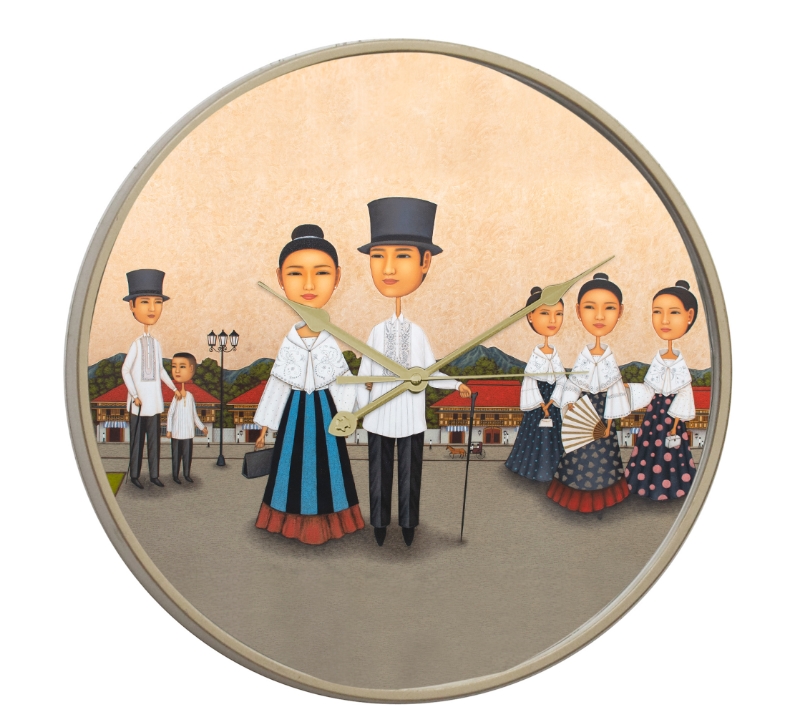
Rubio says of Sol Dorado: “Sol Dorado, means ‘golden sun’ sa Spanish. Pinapakita nito yung pamumuhay ng mga tao noong lumang panahon, yung Filipino way of life ba. Dito sa painting, gumagayak yung mga tao sa plaza, naka-Philippine costume na may iba’t ibang design, kung ano ‘yong talagang suot nila nung panahon. Inspirasyon ko kasi ‘yong mga nangyayari no’ng araw eh. Makikita rito sa painting ang balik-alaala ng Maynila. Pino-portray niya yung mga naging impluwensya ng mga Kastila– ‘yong pananamit, social status, at siyempre ‘yong arkitektura. Gusto kong ipakita yung Maynila noong araw, parang Europe. Napakaganda. Ang sarap ipinta. (Sol Dorado is Spanish for ‘golden sun.’ This shows how Filipino men, women and children used to live in the olden times. In this painting, people get dressed up to go to the plaza. They wear the Philippine national dress in different styles. I wanted to stay true to the designs of those times. The past has always been an inspiration for me. This painting is a nostalgic portrayal of Manila. It also portrays the Spanish influences that have helped to shape our culture–in the way we dress, our society, and architecture. It was a beautiful time that I thoroughly enjoyed painting.)”
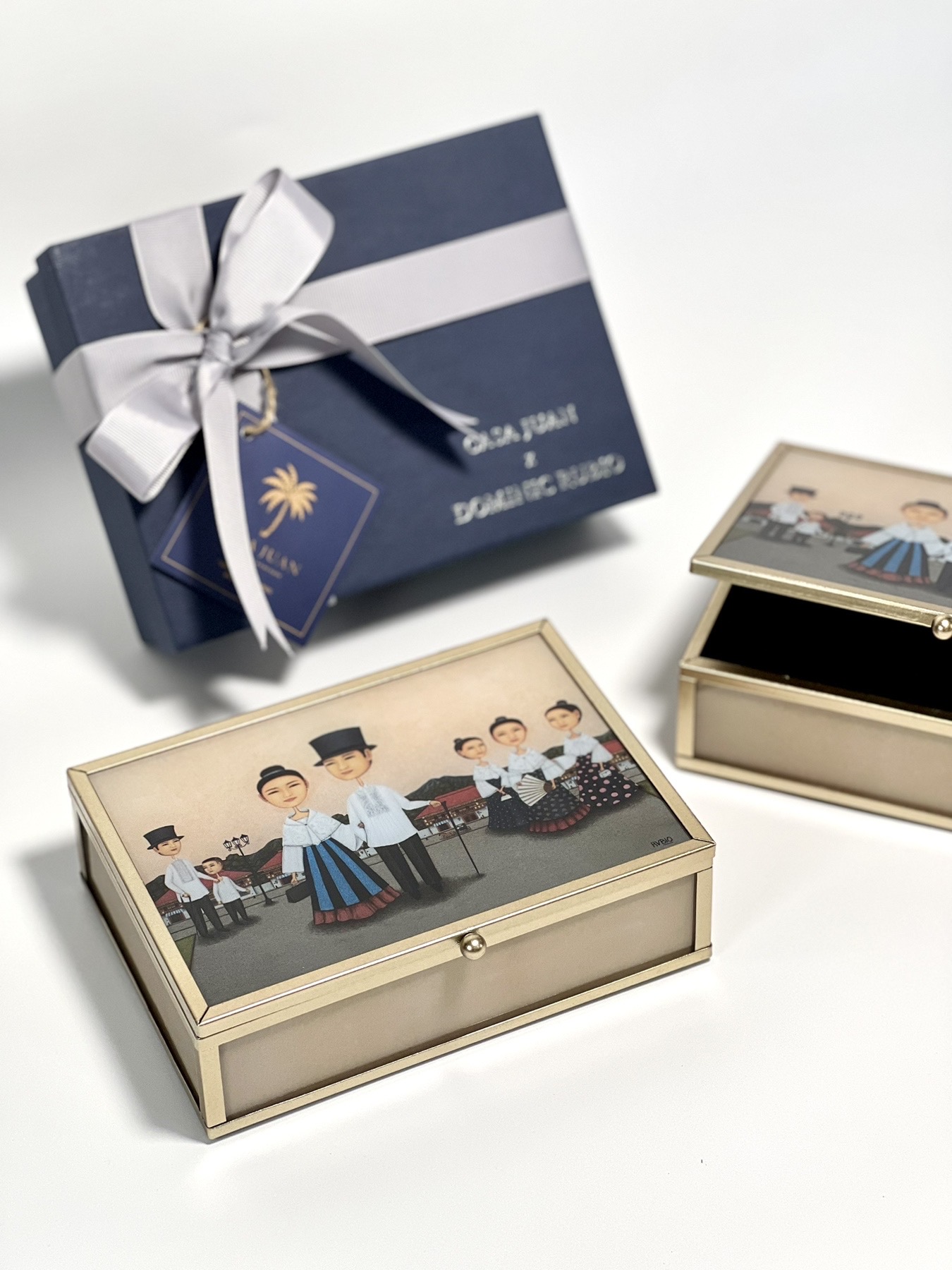
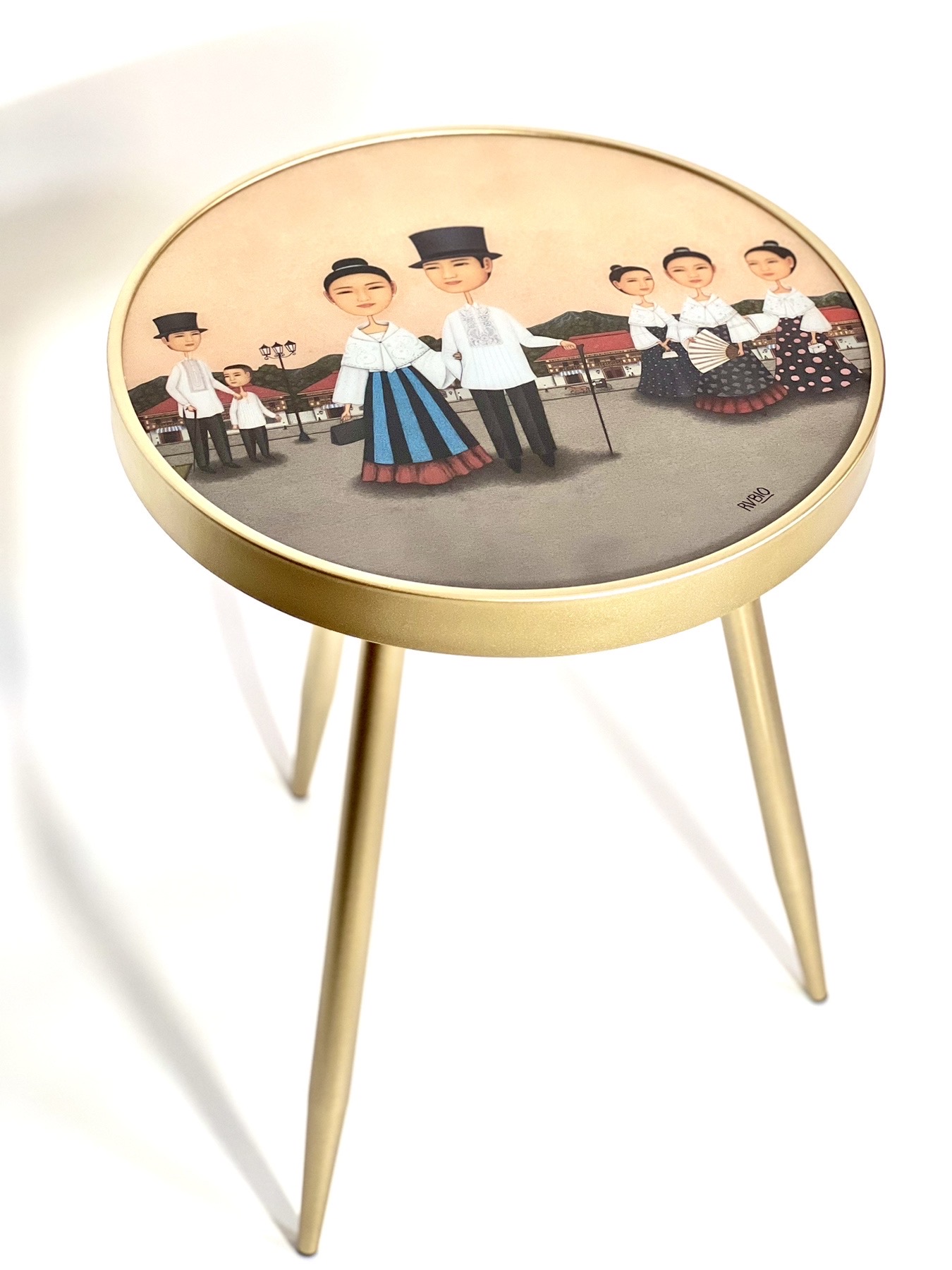
Dominic Rubio on Paseo en Moto (motorcycle ride): “Paseo en Moto means ‘motorcycle ride’ in Spanish. Mas prefer ko talaga na either Spanish o Tagalog ‘yong mga titles ng paintings ko, para authentic. Mahilig ako mag-pinta ng couple na nakasakay sa motor, actually based nga ‘yan sa Vespa. Dito sa painting, makikita niyo na nagjo-joyride sila sa siyudad, namamasyal. Wala pa n’ong Vespa dati, pero nakakatuwa lang i-imagine kasi bagay rin ‘yong style niya sa artwork eh. Parang, retro ba. Mahilig ako magpunta sa probinsya talaga. Mahilig ako mag-ATV (all-terrain vehicles). Tapos pagbaba ko, pinta ulit, tapos akyat ulit. Ngayon, in-incorporate ko ‘yong lifestyle ko ngayon sa mga works ko. Naisip kong lagyan ng Vespa ‘yong mga subjects ko, para panibagong style, tsaka bagay rin naman. Bagay siya sa pagka-neo-genre. Kumbaga pinag-combine ko ‘yong magkaibang era sa iisang painting, ‘yong makabago sa makaluma. Nakakatuwa kasi mukha siyang timeless. Parang nakaka-enhance talaga ng kahit saang lugar sa bahay niyo. (I’ve always been drawn to titles that are either in Tagalog or Spanish. It’s more authentic. I’ve also always loved painting couples riding a motorbike. For this piece, I was inspired by Vespa. In Paseo en Moto I imagined a couple from the Spanish times on a joyride around the city. The irony in this piece is that there were no Vespas during that era. But I found it amusing in any case to imagine because if you think about it, Vespas have that quality about them that almost feel like they come from the olden times. Very retro. I love to spend time in the province, and explore on an all terrain vehicle (ATV). After spending some time away from the city, I find myself inspired by the time I return to painting. Lately, I’ve been incorporating this aspect of life into my work. I decided I wanted something new so I added a Vespa as a subject. It was still a fit since it has the same neo-genre effect. For Paseo en Moto, I combined elements from different eras–the old and the new. Both are actually timeless, and bring something special to any space).”
Get these limited functional art pieces at Galerie Joaquin at the Powerplant Mall in Rockwell or by messaging @casajuanmnl on Instagram.
Photos courtesy of Casa Juan and Galerie Joaquin.





